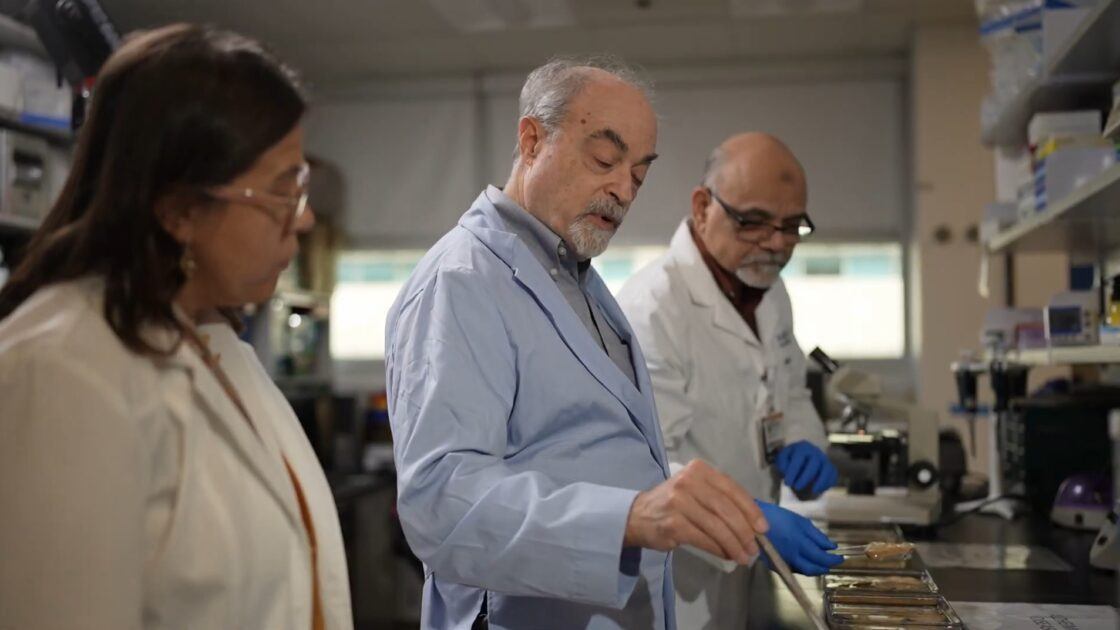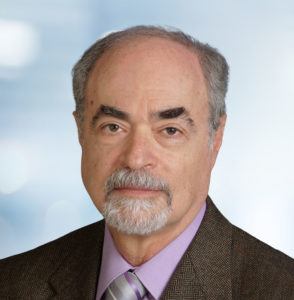
NIH Funds Study of Brain Cell Dysfunction in Down Syndrome, Alzheimer’s
Barrow Neurological Institute has received a $2.4 million, five-year R01 grant from the National Institutes of Health (NIH) to study specific brain cells that are vulnerable to dysfunction in both Down syndrome and Alzheimer’s disease. These particular cells reside within the brain’s frontal cortex and precuneus cortex, two components of a memory circuit termed the “default mode network.”
Barrow researchers Elliott J. Mufson, PhD, and Sylvia E. Perez, PhD, aim to identify the molecular and cellular factors driving dysfunction in these brain cells, or neurons. The insights they gain from this project could lay the groundwork for new therapeutics to prevent cognitive decline in both Down syndrome and Alzheimer’s.
Understanding the ‘Default Mode Network’
To understand large-scale brain networks like the default mode network, imagine a classic wooden ship with crew members performing individual tasks around the deck. While each person has a specific job—steering, navigating, manning the sails—they coordinate their efforts to get the vessel from point A to point B.
Like these shipmates, neurons in different regions of the brain have specific signatures and communicate with one another, resulting in coordinated behaviors. The areas of our brain that make up the default mode network show increased activity when we’re focused on our internal thoughts. For example, neurons in the frontal and precuneus areas appear to play a role in episodic memory and self-awareness.
Something we don’t fully understand, though, is the biology underlying the default mode network, Dr. Mufson explained. Chronicling the normal and abnormal events within the cells of this network—and correlating them with behavioral changes noted in the clinic—could bring us closer to pinpointing the beginning of neuronal dysfunction in both Down syndrome and Alzheimer’s disease. It could also help us better predict who will get the disease by unveiling new biomarkers—measures indicating disease onset in the brain.
What Causes Alzheimer’s Disease? Searching for the First Domino
More than 6 million Americans currently live with Alzheimer’s disease, the most common cause of dementia. The U.S. Food and Drug Administration (FDA) has approved drugs to treat the disease by cleaning up abnormal proteins known as amyloid plaques. However, these medications are not a silver bullet for treating cognitive decline or slowing its progression in those with the disease.
In other words, “We’re treating the disease after it’s already started,” said Dr. Mufson, who primarily studies Alzheimer’s and brought his research to Barrow nearly a decade ago. “We need to find out why the cells die in the first place.”
But this has been easier said than done—in large part because no animal model has successfully replicated the Alzheimer’s disease process seen in humans. This obstacle got Dr. Mufson thinking about Down syndrome, as more than 70 percent of people with Down syndrome eventually develop dementia and associated Alzheimer’s pathology.
“If we can look at what happens to the neurons in the frontal and precuneus regions in people with Down syndrome during its development, then maybe we can figure out why these neurons die,” he said. Essentially, Dr. Mufson is searching for the first Domino in hopes that we can intervene before it topples the rest.
But when Dr. Mufson began pursuing this avenue, he ran into another roadblock: a lack of postmortem tissue from donors with Down syndrome—especially tissue associated with robust clinical data. He began working with researchers around the world to build a shared biobank of brain, blood, and cerebrospinal fluid donations. Over the years, the consortium has acquired tissue from donors with Down syndrome at various ages—both with and without dementia. Dr. Mufson finally had adequate resources to generate the preliminary data needed for an NIH grant application.
“Persistent, high-quality research led us to develop this unique human-based study aimed at understanding the mechanism involved in brain cell loss and providing novel targets to treat dementia in Down syndrome,” Dr. Perez said. “We are happy that the NIH supports our research designed to help and serve the overlooked Down syndrome community.”
‘Untangling’ the Role of Tau in Dementia
The preliminary data acquired by Dr. Mufson’s laboratory shows intriguing findings about brain cells that display the protein tau, which also builds up in Alzheimer’s disease. Normally, tau helps to stabilize neurons so that nutrients can easily move within the brain.
Dr. Mufson and his team found a greater number of tangles containing an advanced type of tau pathology in frontal cortex neurons in Down syndrome with dementia compared to people with Down syndrome who did not develop dementia. The group with dementia also displayed a different transcriptomic signature, or a different collection of cellular gene readouts, than the group without dementia. Furthermore, these genetic errors—which occur during a process known as mRNA splicing—preceded the onset of symptoms in dementia.
The study was designated as an area of great interest by the NIH because of its novel approach to study Down syndrome, and what we learn can likely be translated to Alzheimer’s disease. So it’s a two-for-one study.
Elliott Mufson, PhD, Professor, Department of Translational Neuroscience
Drs. Mufson and Perez will use technically and conceptually innovative approaches to investigate the biological events surrounding the difference in these transcriptomic signatures. Their study will include the brains of people with Down syndrome—both with and without dementia—people with Alzheimer’s, and people with neither condition to serve as a control group.
“It’s taken a long time to do it, but we finally got to the point where we could do this type of research,” Dr. Mufson said. “The study was designated as an area of great interest by the NIH because of its novel approach to study Down syndrome, and what we learn can likely be translated to Alzheimer’s disease. So it’s a two-for-one study.”


